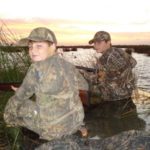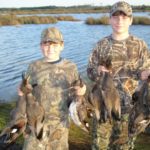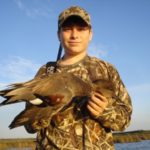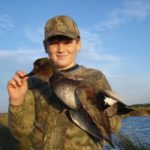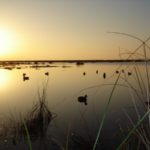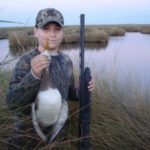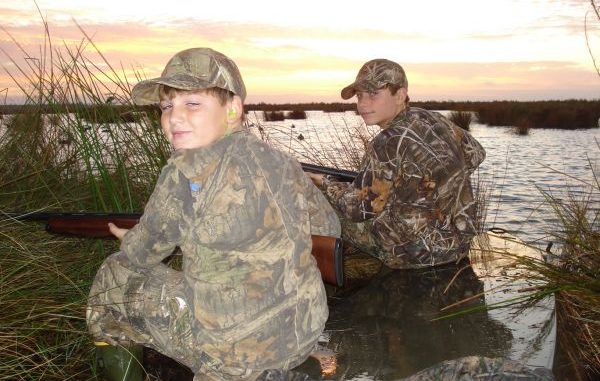
Youth get first crack at duck hunting this month. So be prepared and watch the next generation duck hunters become fanatics.
A long offseason crept to a close as the final weeks were counted down leading up to the last year’s waterfowl seasons.
All my gear was ready, including a hefty supply of stockpiled shells. Unlike most of my previous countdowns, however, this year’s ended a week early — and wouldn’t involve any shooting on my part.
Following careful (and hopeful) planning back in the summer, I’d arranged to host a coworker and his two young sons during the special early season youth waterfowl weekend.
Finally, the big day was upon us, and I wasn’t sure who was more excited: me or the young guns who would actually be doing the shooting.
Held prior to our traditional opening day, such opportunities are specifically geared toward getting new hunters into the blinds when weather conditions are typically mild and birds most cooperative.
And my East Zone youth hunt in November 2012 showed just how effective these opportunities can be in spreading duck fever to the uninitiated.
The weather this time of year is ideal for young hunters, who often gear up in ill-fitted clothing handed down or borrowed from others. Sometimes youth waterfowlers are well prepared for chasing other game but don’t have the proper gear for chasing ducks in wet environments.
Despite not toting my own gun on the hunt, my regimen of extensive preparations was all the same. Scouting missions on the hunting grounds had begun weeks before when the first migrators arrived with early cold fronts. A number of prehunt outings were made to identify the perfect setup for my young hunters who were counting down to their special opening day.
One final visit to the marsh the day before the hunt showed the birds to be content in the serenity of a marsh that had yet to see the first hunters of the regular season.
Gadwalls were mixed with mallards, wigeon and green-winged teal, and all were enjoying some of the better food options in the region considering Hurricane Isaac’s wrath just two months prior. Without the usual pressures of the regular season, the birds paid little mind to me as I watched through binoculars and planned the next day’s onslaught.
The plan was to host brothers Matthew, 13, and David, 10, along with their father Michael. The crew was well versed in the outdoors, being seasoned deer hunters. However, the boys had only dabbled in waterfowl hunting on rare occasion.
As a bonus, our hunt would serve as a golden scouting opportunity in planning my official opening day a week later.
Greeted by pleasant temperatures, my crew came prepared and ready for their crack at the early birds.
Having just set the last spinning decoy atop its PVC pole, I was nearly putting the pirogue on plane heading back to the blind when a splashing sound turned my head: The immediate concern of a dunked battery-powered decoy faded to a smirk as a plump gray duck swam just off the pirogue’s stern.
Clearly the scouting had paid off; the birds had stuck around, and we were on the X.
Getting settled in our makeshift blind, Matthew and David could barely contain their excitement as silhouettes dropped into our spread.
I hardly had time to get through all of my prehunt routine before legal shooting time struck and it was time to unleash the young guns.
More grays approached from the west, just as we’d hoped for given the decoy placement on a respectable east wind, but others banked in from our north and even more chattered overhead on approach from the south.
Wanting to get us off to a good start in the low-light conditions, I held off the guns until the birds offered an equally promising opportunity to both young shooters.
In just a couple of quick volleys, I was chasing downed ducks across the pond. It seemed that just as the last bird was rounded up, the boys were itching to welcome the next visitors with a two-gun salute.
The plan to capture much of the hunt on video was soon scrapped as the near-constant action made it hard to keep up with retrieves.
Offering some instruction during brief lulls, the duo quickly learned to identify the species common to the area. Factors like body size and coloring, calling sounds and flight characteristics were discussed, and soon the deer hunters were picking out approaching flocks from all directions.
Amongst the grays dropping in on us with their telltale chatter, green-winged teal swooped by from both flanks and showed the usual indifference for either carefully placed decoys or the wind direction.
Though I held the guns off on a couple of wads skirting our spread, one group offered just the right presentation. As the two scatter guns rang out, four green-wings were left kicking on the water as the remainder of the flock jetted off to surprise another blind.
In just under an hour, limits were in hand and it was time to pack up.
This kind of action is what every waterfowler dreams of, an all-too-rare occasion when the efforts to plan and prepare come together just right.
The boat ride in included plenty of discussion on when the two could come back and do it again. With eight grays and four teal dangling from the strap, I knew the kids had thoroughly enjoyed themselves.
However, their elation might have paled in comparison to my own enjoyment of the morning, regardless of how brief.
